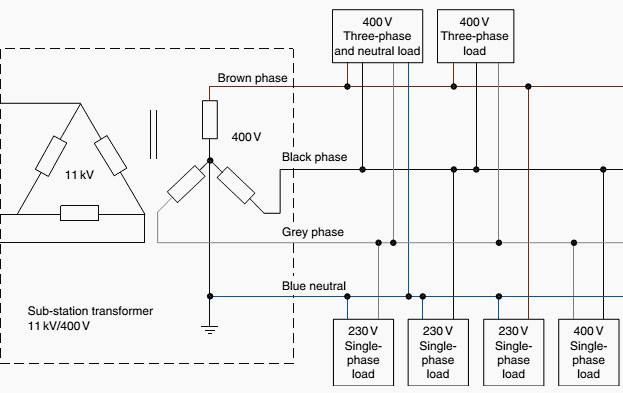Here's a diagram of the common three-phase four-wire distribution system, taken from google, just to make sure we're all on the same page:

First Question:
In actual practice if the load has a neutral terminal provided do you always provide a wire connecting source and load neutrals? Or can you leave it unconnected to save costs?
Second Question:
From p.507 of Electrical Circuits 2nd Ed by Charles Siskind I quote:
"Since the single-phase loads in the three phases between lines A and N, B and N, and C and N, are completely independent of one another, the line-to-neutral voltages EAN, EBN, and ECN are maintained in balance no matter how unbalanced these loads may be. Moreover, the line-to-line voltages are kept equal by the source, which means that the three-phase loads, generally balanced, are not affected by any degree of unbalance in the three-phase loads."
I guess this means one need not concern oneself with distributing loads evenly across all three of the line-to-neutral terminals?
Can anyone help confirm agreement or disagreement?
A guy here says that he only picks the line-to-neutral terminal that has the lowest voltage (the most unbalance coming from the electrical company) and uses that for the whole single-phase loading.
Another guy here says that you are supposed to balance across loading across all the line-to-neutrals.

First Question:
In actual practice if the load has a neutral terminal provided do you always provide a wire connecting source and load neutrals? Or can you leave it unconnected to save costs?
Second Question:
From p.507 of Electrical Circuits 2nd Ed by Charles Siskind I quote:
"Since the single-phase loads in the three phases between lines A and N, B and N, and C and N, are completely independent of one another, the line-to-neutral voltages EAN, EBN, and ECN are maintained in balance no matter how unbalanced these loads may be. Moreover, the line-to-line voltages are kept equal by the source, which means that the three-phase loads, generally balanced, are not affected by any degree of unbalance in the three-phase loads."
I guess this means one need not concern oneself with distributing loads evenly across all three of the line-to-neutral terminals?
Can anyone help confirm agreement or disagreement?
A guy here says that he only picks the line-to-neutral terminal that has the lowest voltage (the most unbalance coming from the electrical company) and uses that for the whole single-phase loading.
Another guy here says that you are supposed to balance across loading across all the line-to-neutrals.
